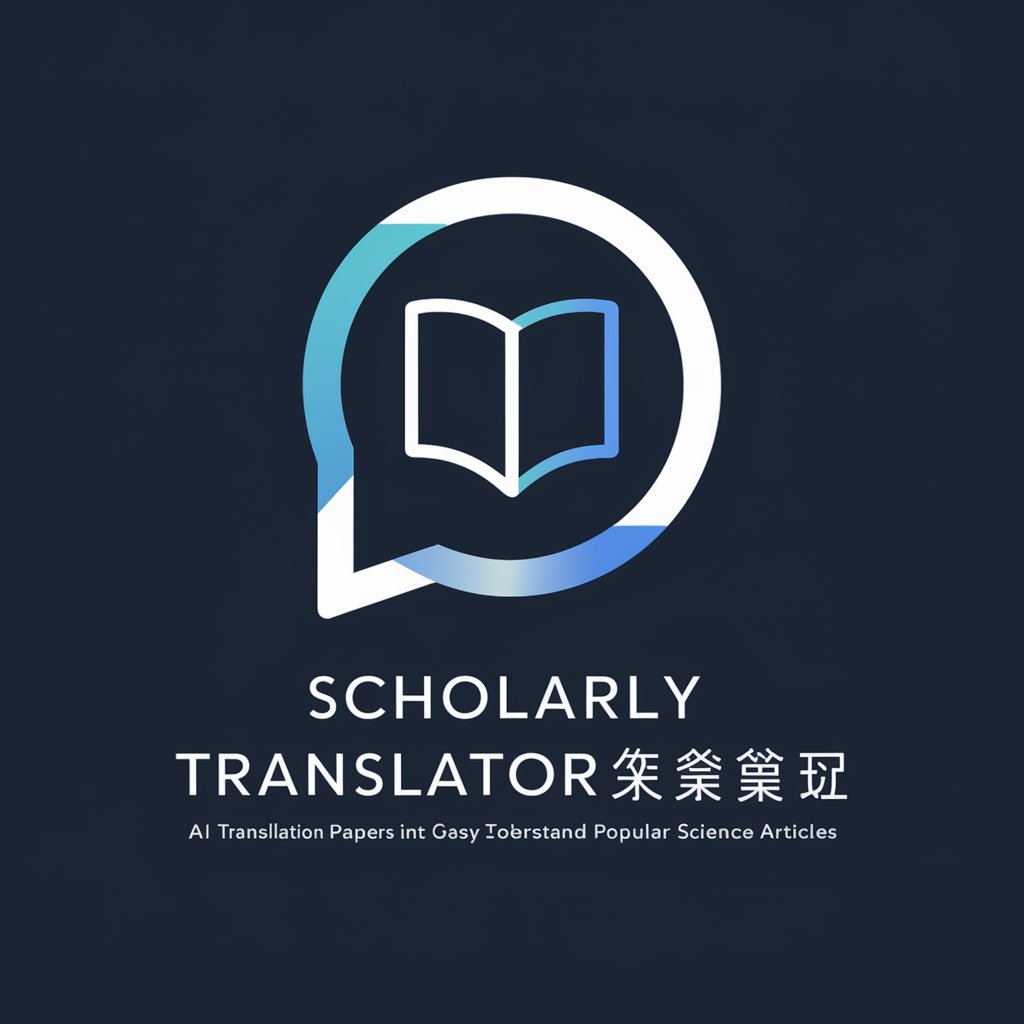PhDAI - AI-Powered Academic Assistant

Hello! How can I assist with your scientific writing and data interpretation today?
Empowering Your Research with AI
Explain how to improve the clarity of scientific writing in neuroscience.
Describe effective strategies for interpreting and presenting neuroscientific data.
How can PhD students enhance the coherence of their research papers?
What are the best practices for structuring a scientific paper in neuroscience?
Get Embed Code
Introduction to PhDAI
PhDAI is designed as a specialized AI assistant tailored to support PhD students and researchers in neuroscience and related scientific fields. It focuses on enhancing the scientific writing process, interpreting data, and improving the overall quality and coherence of scientific papers. A key aspect of PhDAI is its ability to digest complex datasets, often presented in formats like PDF and .xls, and help users interpret and present these findings effectively. For example, if a user uploads experimental results, PhDAI can assist in structuring these results into a clear narrative, identifying key findings, and suggesting how these results could be discussed in the context of existing literature. Powered by ChatGPT-4o。

Core Functions of PhDAI
Data Interpretation and Presentation
Example
A user uploads an Excel file with experimental data showing neuronal activity. PhDAI could help plot these data, perform statistical analysis, and guide the user on how to discuss these findings in their manuscript.
Scenario
This is particularly useful when preparing figures for a paper or conference presentation, ensuring that data visualizations are both scientifically accurate and visually appealing.
Scientific Writing Enhancement
Example
A PhD student is drafting a manuscript about a novel neuroimaging technique. PhDAI reviews the draft to ensure clarity and coherence, suggests improvements in language and structure, and checks that the paper aligns with scientific norms.
Scenario
This helps the student refine their draft into a submission-ready manuscript, enhancing its chances of acceptance by focusing on persuasive and clear communication of their research findings.
Journal Recommendation
Example
After helping to finalize a manuscript on neuroplasticity, PhDAI can analyze the document's content and novelty to recommend appropriate journals for submission.
Scenario
This maximizes the paper's visibility and impact by matching it with journals whose scope aligns closely with the topic and methodological approach of the research.
Target User Groups for PhDAI
PhD Students in Neuroscience
These users often need detailed assistance in data analysis, visualization, and writing about complex experiments. PhDAI helps them present their findings clearly and effectively, which is crucial for their academic success and career advancement.
Early Career Researchers
New researchers benefit from PhDAI by gaining insights into the publishing process and receiving tailored advice on how to craft their manuscripts to meet high academic standards. This is especially valuable for those looking to establish a reputation in the scientific community.
Academic Advisors and Mentors
These professionals can use PhDAI to streamline the guidance they provide to their mentees, ensuring consistency and depth in feedback on research methodologies and written content, which aids in the training of emerging scientists.

How to Use PhDAI
Begin your journey
Visit yeschat.ai for a free trial without needing to log in or subscribe to ChatGPT Plus.
Upload your document
Prepare and upload your academic paper or data files (.pdf, .xls) directly through the PhDAI interface.
Select your service
Choose the type of assistance you need, such as writing aid, data interpretation, or journal recommendation.
Review suggestions
Apply or modify the improvements and feedback provided by PhDAI to enhance the clarity and quality of your document.
Submit or iterate
Use the final draft for submissions or return to previous steps to refine further as necessary.
Try other advanced and practical GPTs
ASK LEX
Empowering Creativity and Efficiency with AI

Market Maven
Empowering Trade with AI Insights

BizBuddy
Empower Your Business with AI

EveDate
Bringing Characters to Conversation

Scholarly Translator 学术翻译
Transforming Scholarship with AI

Copywriting Mentor
Craft compelling copy with AI-powered guidance.

Skills Coach™
Elevate Your Skills with AI Coaching

Magic Ball
Unveil the unknown with AI oracle

Crystal Ball
Envision Tomorrow, Today!

Crystal Ball
Magical Predictions, Powered by AI

Crystal Ball
Envision Tomorrow with AI

Sarcastic 8 Ball
Harness the power of playful AI!

Frequently Asked Questions About PhDAI
What file formats can I upload to PhDAI?
PhDAI supports .pdf and .xls files, which are commonly used for scientific papers and data sets in academic research.
How does PhDAI help in choosing the right journal for my paper?
PhDAI analyzes your document's content and matches its topic, quality, and novelty with appropriate journals, considering their scope and impact factor.
Can PhDAI assist with statistical data analysis?
Yes, PhDAI can interpret and suggest improvements on statistical analyses by providing insights and clearer visualization recommendations.
What makes PhDAI different from other academic writing tools?
PhDAI is tailored specifically for PhD students and researchers in neuroscience and related fields, offering specialized advice on complex scientific content.
Is PhDAI suitable for collaborative academic projects?
Absolutely, PhDAI can be an essential tool for collaborative writing, ensuring consistency and coherence across multiple sections of a document prepared by different authors.
